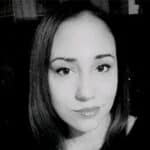Early in the pandemic, searches related to “how to monitor employees working from home” increased by 1,705%. Without the oversight of managers in an office setting, many companies are concerned that their employees are less productive, and that there is an increase risk to the company. This is a major reason why the use of employee monitoring technology has soared in the past year. Stories are common of how companies are using employee monitoring as “bossware” to micromanage at-home workers, and that they are using techniques that are closer to spying than to managing their employees. Much of this concern is due to a very small percentage of technology misuse combined with a host of mistakes that companies have made when implementing the software. Here are several common myths and truths about employee monitoring to help companies cut through the concern and make the most of employee monitoring:
Myth #1 – Most Employees Are Less Productive When They Work From Home
TRUTH: Studies have shown that people are generally productive at home, save for a few people who are not. This myth has actually been busted time and again, yet managers continue to distrust their employees. Importantly, outlier groups, such as women, minorities and workers with disabilities are more likely to choose to work from home, either because it makes their schedule easier, reduces stress in the workplace, or is physically less difficult. Employers need to sensitive to this reality, and audit their own employee base to get a better understanding of who is working and ensure that they get fair treatment.
Myth #2 – Managers Do a Better Job of Overseeing Employees than Software Can
TRUTH: Employee monitoring can actually help employers treat at-home workers of all types more fairly if employees in the office are monitored in the same way. The reason is simple – software can be more objective than humans. There is often a bias inherent in the way managers treat employees. While the vast majority of companies still agree that managers are vital to creating a productive workforce, the addition of employee monitoring software can serve to balance or eliminate those potential biases. What’s more, employees actually prefer technology-based oversight specifically because they believe it is less biased.
Myth #3 – Employees Will Quit if they Know They are Being Monitored
TRUTH: Unfortunately, a large number of organizations have shied away from outwardly discussing employee monitoring with their employees. While the majority of companies are monitoring their staff, only about half of employees are aware that their companies are doing so. This is a missed opportunity. It’s important to make employees aware of monitoring activities. First, a growing number of states are requiring companies to disclose that they are using monitoring software including New York, Connecticut and Delaware. What’s more, as employee monitoring becomes accepted as the norm (and it already is the norm), employees will be less concerned that they are being monitored, and more concerned about how their company is approaching monitoring. Transparency and clarity of expectations can go a long way to ensuring that employees embrace monitoring. One survey found that explaining the reason for and scope around the monitoring can improve employee acceptance by 70%.
Myth #4 – People Should Be At Their Desks From 9-5 (or 6)
TRUTH: People have adopted a wide variety of different work schedules and styles, which doesn’t usually indicate any issue with productivity. In fact, accommodating more personalized schedules can help companies hold onto valuable employees who appreciate the flexibility. Save for hourly workers and other staff that are specifically paid to be on call or productive for very specific times in the day, many workers should be held to different standards. Rather than penalize someone who has left their computer for a few hours in the middle of the day, a company should monitor their overall work patterns and look at aggregate work. And even if someone’s work volume has decreased, that should be the beginning of a conversation with their manager, not an immediate red flag for disciplinary action. Someone might prefer to work from their phone, or have had a work event to attend. It’s much better for employers to use software as a path to better understanding than as the first and final answer.
Truth – Employee Monitoring Is Here to Stay
Ultimately, the truth is that people expect a more flexible work environment, and employee monitoring helps companies allow that to happen. As employee monitoring matures as a part of everyday work culture, companies will become more adept at transparency, communication and at reducing bias. At the same time, employees will be better at spotting good monitoring practices vs. bad practices, just as they can spot good managers and bad managers. As more states follow New York and adopt regulations around monitoring, it’s in a company’s best interest to follow best practices sooner rather than later.

Insider Risk – How Prepared Are You?
Not every company is equally prepared to deal with insider risk. This report outlines the four stages of insider risk maturity and explores how to improve your insider risk preparedness.




